Text
Florida skunk roach (Eurycotis floridana) grazing on wheat bran
489 notes
·
View notes
Text
the fiercest hunter…
(juvenile Acanthophrynus coronatus)
2K notes
·
View notes
Text
the rituals are intricate
(Phrynus marginemaculatus courtship)
In this clip the male is above and the female is below. I didn’t witness the actual mating but I left them together in a larger enclosure and found a spermatophore stalk the next morning, so they most likely mated successfully soon afterwards.
(Music: Marsh feat. Sun Ra- Another Planet)
#arachnids#florida tailless whipscorpion#phrynus marginemaculatus#amblypygi#phrynidae#phrynus#amblypygids#bugs#bugblr#entomology
104 notes
·
View notes
Text
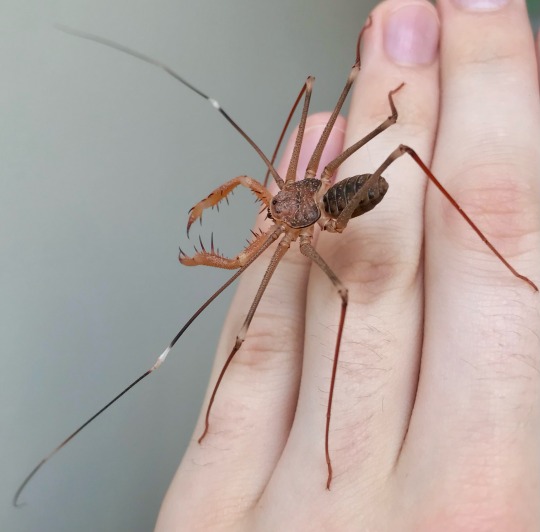
Recently fulfilled a years-long dream by obtaining a couple captive bred Acanthophrynus coronatus! A huge and beautiful amblypygid native to caves and forests in western Mexico.
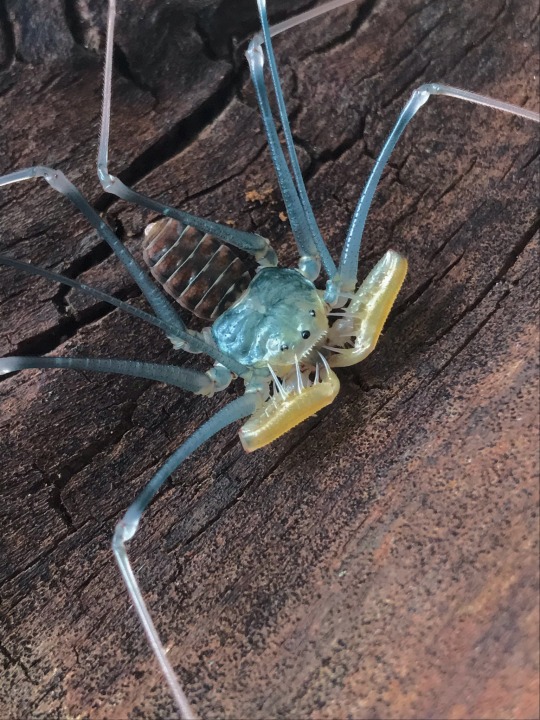

Although they’re already quite large, these are just babies with a lot of growing to do. Adults can have bodies measuring 2” long without the appendages. They’re likely the world’s largest amblypygid species by mass, although some of their even lankier cousins in the genus Heterophrynus have a wider legspan.
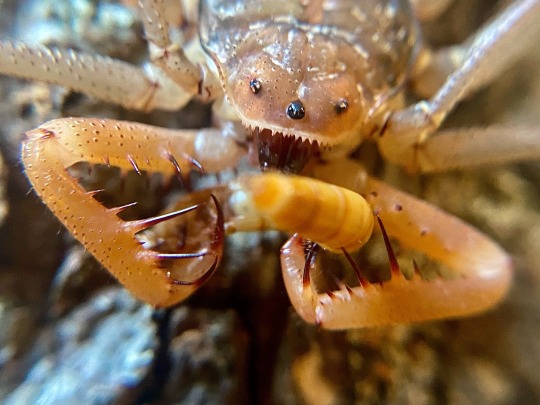
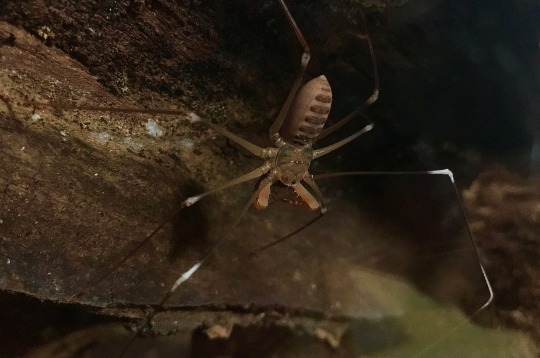
In addition to their massive size and unique coloration, these guys are very active and inquisitive and have a bold attitude compared to most other amblypygids. Even as babies they often respond to potential danger by throwing up a threat display instead of freezing or running, and when they get larger they’ll be able to stridulate with their mouthparts to make a sound somewhat reminiscent of a rattlesnake.
Currently these are rare in the US bug hobby (I got them from the first person to breed them in the US), but they’re actually a very easy species to keep and breed so they should become more available soon. They make fantastic pets and display animals so my hope is they’ll become popular and inspire an increased appreciation for amblypygids.
#amblypygids#arachnids#bugs#acanthophrynus#amblypygi#bugblr#acanthophrynus coronatus#phrynidae#spiders#entomology#tarantulablr
1K notes
·
View notes
Text

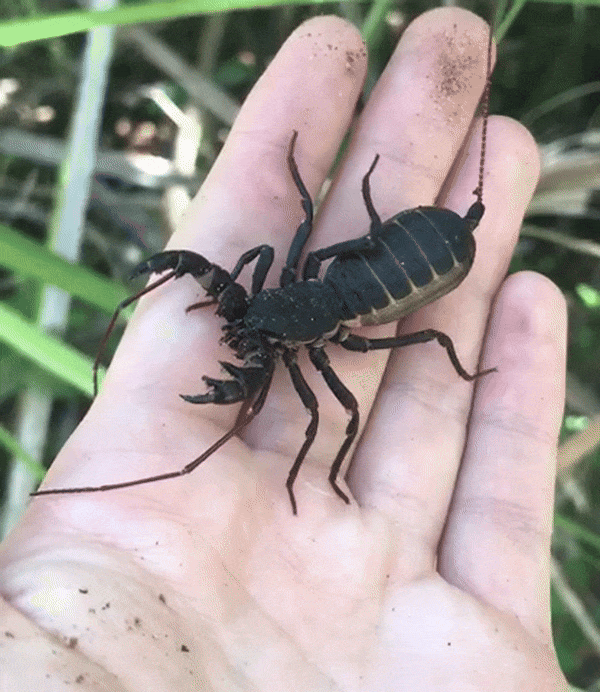

Very cool find from last spring- a Florida vinegaroon (Mastigoproctus floridanus) that was hiding inside a rotting log.
despite her impressive size, this rarely encountered Florida endemic is actually the smallest of the 3 vinegaroons in the US, and some of the Mastigoproctus species from Mexico and southwards get even larger.
and yes they’re called vinegaroons (among other fun names) because they squirt concentrated vinegar from their butt as a chemical defense
(Florida, 4/17/23)
#arachnids#uropygi#vinegaroon#grampus#thelyphonida#mastigoproctus#whip scorpion#bugs#bugblr#entomology#biology
2K notes
·
View notes
Text


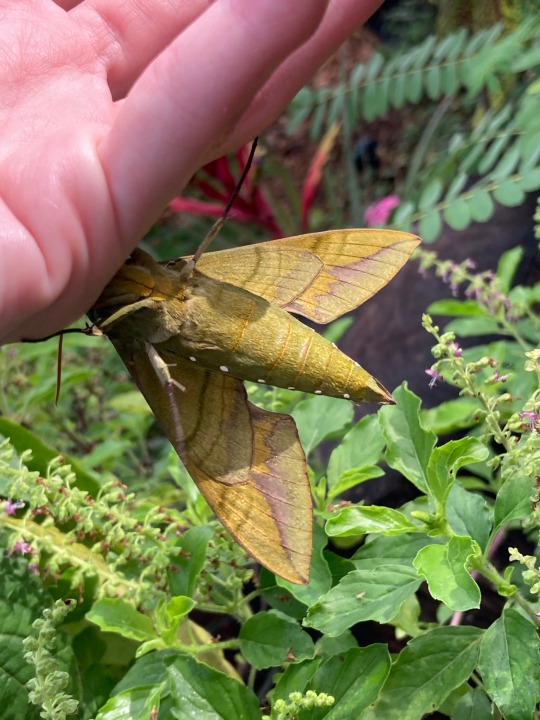
we found the coolest moth today
gaudy sphinx
10K notes
·
View notes
Text
Eumaeus atala
(Florida, 11/11/23)
#these are from a population that’s been recently reintroduced where they previously disappeared#they were critically endangered after coontie cycads were overharvested (their hostplant) but are making a solid comeback#insects#lepidoptera#butterflies#atala butterfly#bugs#bugblr#entomology#biology
307 notes
·
View notes
Note
I think this is especially funny because the brains of arthropods have structures called mushroom bodies whose functions are not fully understood but are known to play an important role in learning and memory. And amblypygids happen to have the largest mushroom bodies of any arthropod, which are proportionally massive and heavily wrinkled almost like the mammalian neocortex.
So in addition to the existing behavioral evidence that amblypygids are quite capable of learning and remembering things there’s good reason to believe they may have extraordinary cognitive abilities among arthropods.
you think these things recognize each other literally at all? "if they remember each other" yeah right
presumably in response to:
amblypygi have good memories and a very complex sense of olfaction; mother and child both touched one another with their whips and certainly sensed another member of the same species.
multiple species of phrynids live in family groups (in Heterophrynus even males are involved!) but it’s currently unknown what the social biology of Phrynus whitei is like, although based on my observations of this species in captivity and in the wild they seem solitary and territorial. it’s a genuine question, though, if they can recognize kin! there’d be plenty of reasons why this would be useful for these animals in the wild, such as avoiding inbreeding.
I think your comment seems a little ignorant so I hope I’ve made you smarter. I can get links to some papers on amblypygid sociality if you’d like them too!
1K notes
·
View notes
Text
a Paraphrynus cubensis amblypygid chewing up some roach juices
290 notes
·
View notes
Text

Bluemask Darter (Etheostoma akatulo), male, family Percidae, order Perciformes, Tennessee, USA
ENDANGERED.
photograph by isaac szabo
4K notes
·
View notes
Text
Phidippus purpuratus is a large jumping spider most often found in Canada and the northern US, where they live on the ground or among boulders in exposed, rocky habitats like mountaintops and sea cliffs. This is a rather different lifestyle from some of their more arboreal cousins, and I assume they rely on the warmth of sun-baked rocks to sustain activity in the cold and windswept places they inhabit.

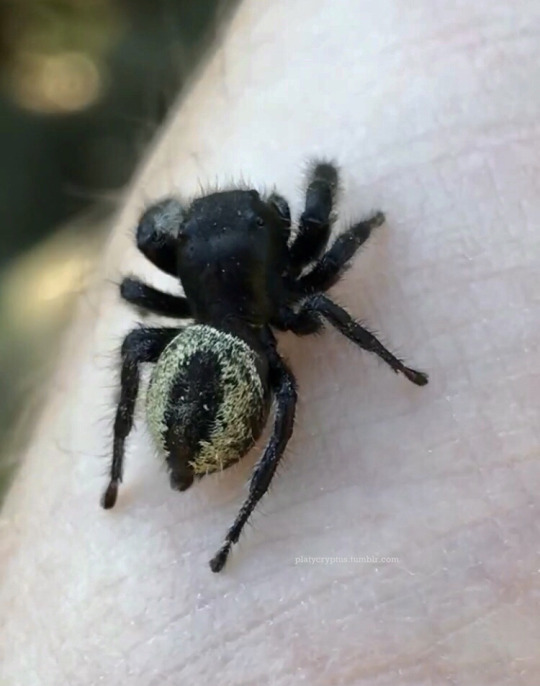

They’re well camouflaged among the lichen covered granite on this mountain in Maine, probably because they have to be- more conspicuously colored jumpers like P. regius and audax often have the option to drop into dense vegetation when threatened, but I saw these hunting on bare rock with nowhere to run should they face the misfortune of being spotted by a bird.
(Maine, 7/26/22)
#arachnids#phidippus purpuratus#salticidae#jumping spider#phidippus#spiders#bugs#bugblr#entomology#biology
606 notes
·
View notes
Text




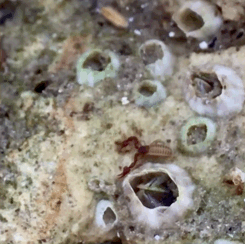
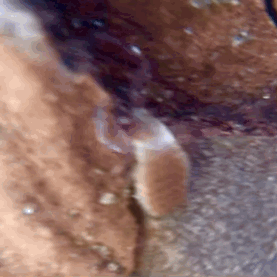

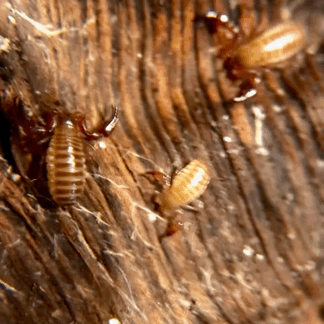


gifs of various pseudoscorpions
#arachnids#pseudoscorpiones#cheliferidae#atemnidae#chernetidae#pseudoscorpion#paratemnoides#bugs#buglr#entomology
3K notes
·
View notes
Text
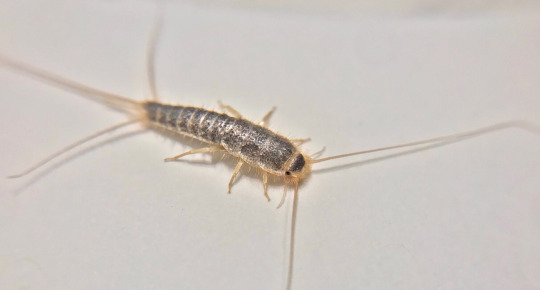
(Ctenolepisma longicaudata)
1K notes
·
View notes
Text

Marina’s babies are here!!! they must’ve hatched just hours ago

I won’t count them yet since I don’t want to bother the little family, but there’s a lot, with babies hanging onto her back and her belly. so happy for her
(Phrynus whitei)
4K notes
·
View notes
Text
when was the last time you saw a weevil this big
The largest weevil in North America, the palmetto weevil (Rhyncophorus cruentatus) lays eggs in the crowns of palms, where the grubs feed and often kill their host in the process.
In Florida it’s considered a major pest due to its habit of destroying ornamental palm trees, but native palmettos and sabal palms (the weevils’ natural hosts) are rarely harmed unless they’re already stressed or damaged. It’s mostly date palms and other exotic species planted along city streets that can’t take the heat and need to be drenched with insecticide to ensure survival.
(Florida, 10/31/23)
5K notes
·
View notes
Text

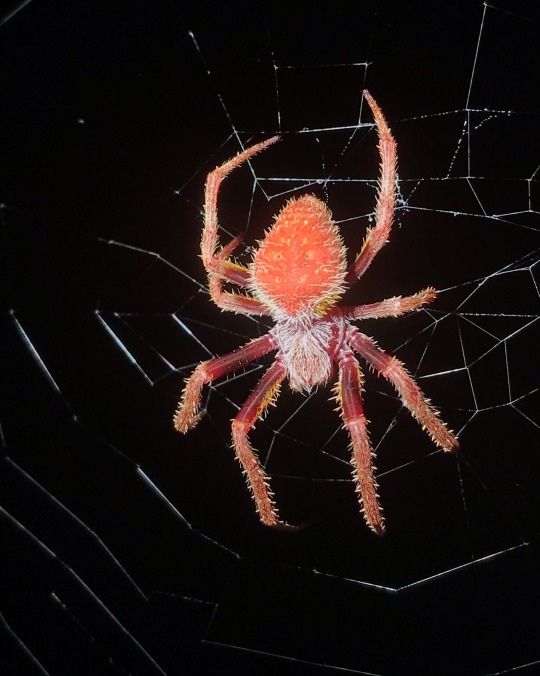
The tropical orbweaver (Eriophora ravilla) is a widespread species found from the warmer parts of the southern US down to South America.
Unlike some other orbweavers, E. ravilla is strictly nocturnal, tearing down and consuming its web before hiding every morning and rebuilding it remarkably fast in the evening. Walk down a trail in Florida at dusk and you’ll likely find your return path blocked by large webs that weren’t there just a few minutes prior. This behavior likely helps them avoid detection by day-flying spider wasps that might otherwise use the web locate them.
999 notes
·
View notes